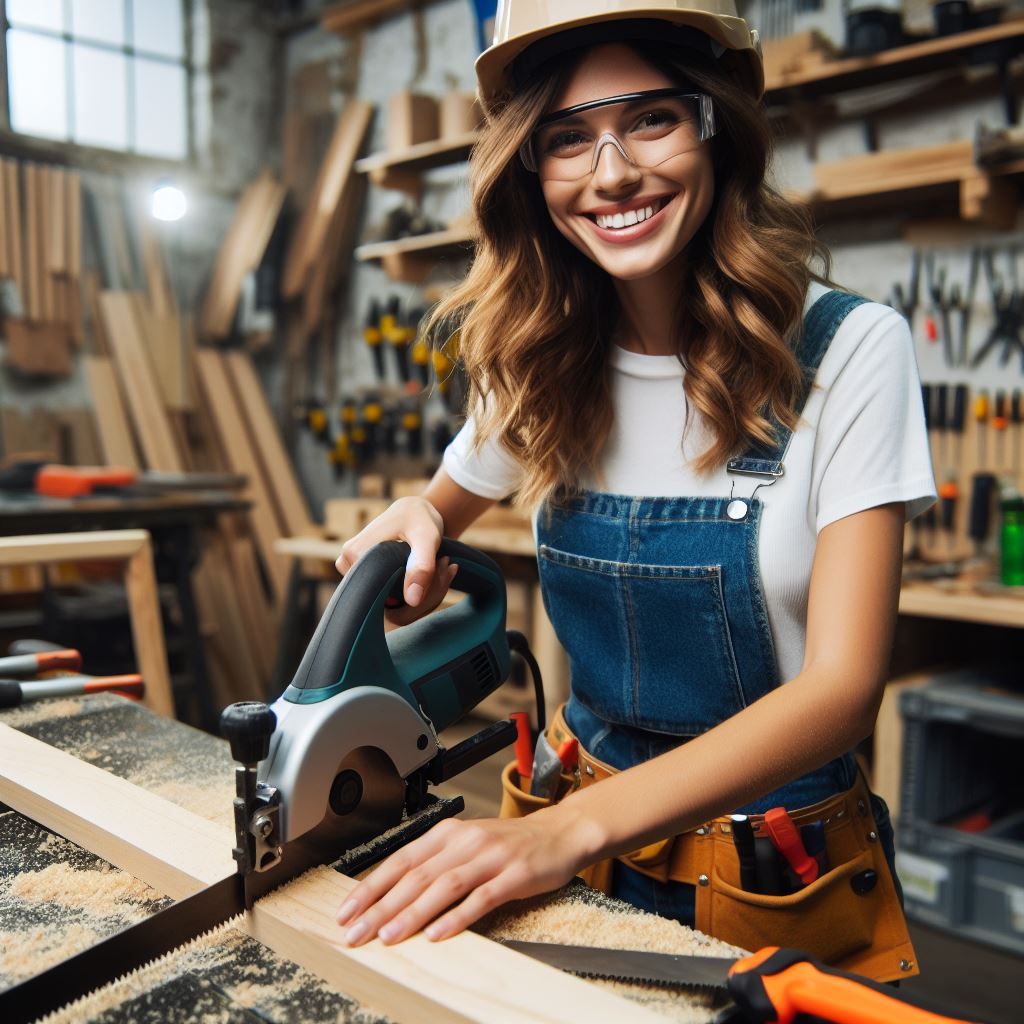Introduction
Welcome to our exploration of “NZ’s Best Carpentry Projects Reviewed,” where we showcase outstanding craftsmanship across the nation.
In this post, we’ll delve into remarkable carpentry projects that showcase innovation, skill, and creativity.
From residential renovations to commercial constructions, we highlight diverse projects that demonstrate the versatility of carpentry.
Our review encompasses projects that blend traditional craftsmanship with modern design principles.
Each project reflects the dedication, expertise, and attention to detail of New Zealand’s carpenters.
We celebrate the creativity and ingenuity that shape these remarkable carpentry endeavors.
Throughout this post, we’ll examine the unique features and challenges of each showcased project.
From intricate woodworking to structural marvels, we explore the breadth of carpentry excellence in New Zealand.
Our review spans architectural wonders, bespoke furniture, and sustainable construction initiatives.
We aim to inspire and applaud the talent and innovation within New Zealand’s carpentry industry.
Join us on a journey through the finest carpentry projects that exemplify excellence and craftsmanship.
Discover the stories behind these extraordinary creations, each representing a testament to carpentry mastery.
As we delve into each project, we uncover the artistry and dedication poured into its realization.
From heritage restoration to contemporary installations, we showcase the diversity and skill of New Zealand’s carpenters.
Whether crafting timeless pieces or pushing the boundaries of innovation, these projects redefine carpentry excellence.
We invite you to explore the ingenuity and craftsmanship showcased in NZ’s best carpentry projects.
Throughout this post, we’ll delve into the inspirations, challenges, and triumphs behind each masterpiece.
From concept to completion, these projects exemplify the pinnacle of carpentry achievement in New Zealand.
Join us as we celebrate the talent, passion, and innovation that define NZ’s best carpentry projects.
Throughout this post, we pay homage to the craftsmanship and creativity that enrich New Zealand’s architectural landscape.
Overview of Carpentry in New Zealand
Carpentry in New Zealand is an integral part of the construction sector, playing a significant role in building and renovating structures.
Carpenters are highly skilled professionals who contribute to the success of various projects.
- Strong Tradition: Carpentry has a rich history in New Zealand, with a strong tradition of craftsmanship passed down through generations.
- High Demand: The construction industry in New Zealand is booming, leading to a high demand for skilled carpenters who can deliver quality workmanship.
- Versatility: Carpenters are versatile professionals who work on a wide range of projects, including residential, commercial, and industrial buildings.
- Building Codes and Standards: Carpenters in New Zealand must adhere to strict building codes and standards to ensure the safety and durability of structures.
- Apprenticeship Programs: To become a qualified carpenter, individuals often complete apprenticeship programs that provide hands-on training and theoretical knowledge.
Significance of Carpentry in the Construction Sector
- Structural Integrity: Carpenters play a crucial role in ensuring the structural integrity of buildings, ensuring they can withstand environmental factors and meet safety regulations.
- Customization: With their skills and expertise, carpenters can customize structures according to clients’ preferences and design requirements.
- Efficient Resource Utilization: Carpenters optimize resource utilization, minimizing waste and maximizing efficiency, resulting in cost-effective construction projects.
- Collaboration with Other Trades: Carpenters collaborate with other professionals, such as architects, engineers, and plumbers, to integrate different aspects of construction seamlessly.
- Aesthetic Appeal: Carpenters enhance the aesthetic appeal of buildings through the use of carefully crafted woodwork, adding value to the overall design.
Role of Carpenters in Building and Renovating Structures
- Planning and Design: Carpenters work closely with architects and designers to understand the project’s requirements and contribute to the planning and design process.
- Framing and Structure: Carpenters are responsible for framing and constructing the structure of buildings, including walls, floors, and roofs.
- Installation of Doors and Windows: Carpenters expertly install doors, windows, and other architectural elements, ensuring proper fit and functionality.
- Finishing Work: Carpenters add the finishing touches to a project, including installing trim, molding, and other decorative elements.
- Renovations and Repairs: Carpenters specialize in renovating existing structures, providing solutions for modifications, repairs, and remodeling.
Top Carpentry Projects in New Zealand
- Sky Tower Observation Deck: A renowned carpentry project, the Sky Tower Observation Deck offers breathtaking views of the cityscape.
- Christchurch Rebuild: Following the devastating earthquakes in Christchurch, carpenters played a vital role in rebuilding the city’s infrastructure.
- Heritage Home Restorations: Carpenters contribute to preserving New Zealand’s heritage by restoring and renovating historic homes.
- Commercial Office Fit-outs: Carpenters create customized office spaces, focusing on functionality and creating a conducive work environment.
- Sustainable Housing Projects: Carpenters are increasingly involved in constructing energy-efficient and sustainable housing projects, utilizing eco-friendly materials and techniques.
Overall, carpentry in New Zealand holds great significance in the construction sector.
Carpenters’ skills, craftsmanship, and attention to detail contribute to creating safe, functional, and visually appealing structures.
Read: Top Carpentry Courses in New Zealand
Criteria for selecting the best carpentry projects
- Creativity and uniqueness: Projects that showcase innovative designs and concepts are preferred.
- Quality of materials: The choice of high-quality, sustainable materials contributes to the overall excellence of a project.
- Craftsmanship: Attention to detail and precision in execution are vital factors in evaluating carpentry projects.
- Practicality and functionality: The project should serve its intended purpose efficiently and effectively.
- Aesthetic appeal: The visual appeal of the finished project is crucial in determining its quality.
- Durability and longevity: Projects that are built to withstand wear and tear and have a long lifespan are highly regarded.
- Use of sustainable practices: Projects that incorporate eco-friendly materials and construction techniques are favored.
Factors considered in evaluating the projects
- Design complexity: The level of intricacy and complexity in the project design influences its overall evaluation.
- Execution precision: The accuracy and precision in the construction process contribute to the project’s success.
- Attention to detail: Meticulous attention to even the smallest details enhances the overall quality of the project.
- Structural integrity: The project should be structurally sound, ensuring safety and longevity.
- Finishing touches: The quality of the finishing touches, such as sanding, staining, and painting, reflects the craftsmanship.
- Functionality and practicality: How well the project fulfills its intended purpose and meets the client’s needs is crucial.
Importance of craftsmanship, innovation, and sustainability in carpentry
Craftsmanship
- Craftsmanship ensures the finest quality of carpentry work, with attention to detail and precision.
- It adds value to the project, making it stand out and command a higher price in the market.
- Craftsmanship reflects the skills, expertise, and pride of the carpenter, contributing to their professional reputation.
Innovation
- Innovation drives progress in the carpentry industry, leading to the creation of unique and groundbreaking projects.
- It encourages creativity and out-of-the-box thinking, resulting in distinctively designed and functional pieces.
- Innovative carpentry projects inspire others and push the boundaries of traditional craftsmanship.
Sustainability
- Sustainable carpentry minimizes environmental impact by using eco-friendly materials and techniques.
- Incorporating sustainable practices promotes responsible construction and reduces carbon footprint.
- Sustainability in carpentry ensures the longevity and durability of projects, reducing waste and the need for replacements.
In general, selecting the best carpentry projects involves considering criteria such as creativity, quality materials, craftsmanship, functionality, aesthetic appeal, and sustainability.
Evaluating projects requires assessing factors like design complexity, execution precision, attention to detail, structural integrity, and finishing touches.
Furthermore, emphasizing the importance of craftsmanship, innovation, and sustainability in carpentry ensures the production of high-quality, unique, and environmentally conscious projects.
Read: Carpenter Apprenticeships in NZ Explained

Spotlight on the first reviewed project: Te Whare Pūtaka – The House of Learning, Waipapa
The first reviewed project is Te Whare Pūtaka, also known as The House of Learning, located in Waipapa, New Zealand.
This project is a stunning example of carpentry craftsmanship, showcasing the best of what New Zealand has to offer.
- The Te Whare Pūtaka project is situated in the Waipapa Valley, surrounded by the breathtaking beauty of nature.
- One of the notable features of this project is the unique design inspired by Māori culture, representing knowledge and learning.
- The exterior of the building is made from locally sourced native timber, adding warmth and a sense of connection to the environment.
- The intricate carvings on the walls and beams showcase the exceptional skill and artistry of the carpenters involved.
- Inside, the craftsmanship continues with stunning wooden panels covering the walls, creating a welcoming and serene atmosphere.
- The construction team faced unique challenges when building Te Whare Pūtaka due to the remote location and environmental restrictions.
- The project required careful planning to ensure minimal disruption to the surrounding wildlife and natural habitat.
- The carpenters had to work closely with environmental agencies to adhere to strict guidelines throughout the construction process.
- The construction team also had to find innovative solutions to transport materials and equipment to the remote location.
- Despite these challenges, the carpenters successfully completed the project, delivering a masterpiece that harmoniously blends with its surroundings.
Summary of the project and its location
In essence, Te Whare Pūtaka – The House of Learning is a remarkable carpentry project located in Waipapa, New Zealand.
Notable features and craftsmanship of the project
The craftsmanship and attention to detail displayed in this project are truly exceptional, making it one of New Zealand’s best carpentry projects.
Unique challenges faced during the construction
Despite the unique challenges faced during construction, the team successfully created a building that not only showcases their carpentry skills but also respects and integrates with the natural environment.
Te Whare Pūtaka stands as a testament to the talent and creativity of New Zealand carpenters and serves as an inspiration to future projects.
Read: Carpentry 101: A Guide for Kiwi Beginners
Spotlight on the second reviewed project: The Treehouse, Punakaiki Pancake Rocks
The Treehouse, located in Punakaiki Pancake Rocks, is a remarkable carpentry project that showcases the finest craftsmanship in New Zealand.
Situated amidst the breathtaking natural beauty of the West Coast, this unique structure is a testament to the skill and creativity of the builders.
Notable features and craftsmanship
- The Treehouse is an architectural marvel, seamlessly blending into the surrounding trees and landscape.
- Using sustainably sourced timber, the carpenters have created a structure that not only complements its environment but also leaves a minimal ecological footprint.
- The attention to detail in the construction is evident throughout. From the intricate joinery to the perfectly aligned panels, every aspect of the Treehouse showcases exemplary craftsmanship.
- The interior of the Treehouse is equally impressive. The use of natural materials and the incorporation of large windows provide a seamless connection between the indoor and outdoor spaces.
- The Treehouse is suspended amidst the trees, giving visitors a sense of being immersed in nature while enjoying modern amenities and comfort.
Unique challenges faced during construction
- One of the major challenges faced during the construction of the Treehouse was its remote location and difficult terrain.
- The builders had to transport heavy equipment and materials through dense forests, often requiring innovative solutions and careful planning.
- The team also had to work around the natural elements, such as inclement weather and seasonal variations, which added complexity to the construction process.
- Given the intricate design of the Treehouse, ensuring structural stability presented a unique challenge.
The builders had to employ creative engineering techniques to achieve both functionality and aesthetics. - Another challenge was the sensitive nature of the site. The builders had to adhere to strict environmental guidelines to minimize any impact on the surrounding ecosystem.
Essentially, the Treehouse in Punakaiki Pancake Rocks is a captivating example of carpentry mastery.
Its seamless integration with the environment, remarkable craftsmanship, and unique challenges overcome during construction make it a standout project in New Zealand.
This architectural feat not only highlights the skill of the builders but also serves as a testament to the harmonious relationship between human construction and nature.
Personalized Career Consulting
Unlock your potential with expert career advice tailored to your goals. Get personalized guidance and actionable steps toward your dream career in New Zealand.
Get StartedRead: Kiwi Carpenter Salary Insights 2024
Spotlight on the third reviewed project: The Woodside Chapel, Christchurch
A summary of the project and its location
The Woodside Chapel, located in Christchurch, is one of the most impressive carpentry projects in New Zealand.
This beautifully designed chapel showcases exceptional craftsmanship and attention to detail.
The notable features and craftsmanship of the project
One of the notable features of the Woodside Chapel is its stunning timberwork.
The entire structure is built using high-quality native New Zealand timber, giving it a warm and inviting feel.
The intricate carving on the exterior adds to its aesthetic appeal, making it a standout piece of architecture.
The craftsmanship displayed in the interior of the chapel is equally impressive. The wooden pews, altar, and pulpit are all meticulously crafted and have an elegant finish.
Each piece of furniture is made to perfection, showcasing the skill and expertise of the carpenters.
Any unique challenges faced during the construction
The Woodside Chapel also incorporates several unique features. The stained glass windows, imported from Europe, add a touch of color and vibrancy to the chapel.
The attention to detail in these windows is remarkable, with intricate patterns that cast beautiful rays of light inside the chapel.
During the construction of the Woodside Chapel, the carpenters faced unique challenges.
The biggest obstacle was to ensure that the chapel blended seamlessly with its natural surroundings.
The architects and carpenters had to work together to create a design that complemented the surrounding landscape while maintaining the integrity of the structure.
Another challenge was the incorporation of modern amenities without compromising the traditional design of the chapel.
The chapel needed to provide all the necessary facilities, such as heating and lighting, without detracting from its authentic charm. This required careful planning and innovative solutions.
The Woodside Chapel stands as a testament to the skill and dedication of the carpenters involved in its construction. Not only is it a place of worship, but it is also a work of art.
The attention to detail, the use of quality materials, and the seamless integration with the environment make it a standout carpentry project in New Zealand.
Generally, the Woodside Chapel in Christchurch is an exceptional carpentry project that showcases the mastery of the craftsmen involved.
Its notable features, including the intricate timberwork and stained glass windows, make it a visual delight.
The challenges faced during its construction were expertly overcome, resulting in a harmonious blend of tradition and modernity.
The Woodside Chapel is truly a remarkable achievement in New Zealand’s carpentry industry.
Conclusion
NZ’s top carpentry projects showcase skill, innovation, and craftsmanship in architecture.
Each project reflects versatility and ingenuity.
The industry demonstrates diversity, from intricate woodworking to sustainable initiatives.
These endeavors push boundaries, highlighting dedication, expertise, and passion.
Collaboration among architects, designers, and carpenters brings visionary concepts to life.
Projects restore heritage sites and craft contemporary installations.
They celebrate unique features and challenges, highlighting artistry and precision.
New Zealand’s carpentry industry reflects excellence and innovation.
Architects, designers, and carpenters shape the architectural landscape, leaving an indelible mark.
The review evokes appreciation for craftsmanship, reminding us of carpentry’s profound impact.
It’s a dialogue between creativity and the built environment, shaping communities.




